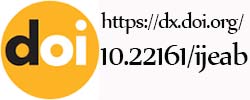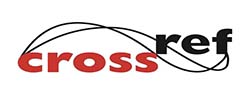Author: Degefa Boloche, Tamirat Wato
![]() DOI: 10.22161/ijeab.74.27
DOI: 10.22161/ijeab.74.27
Keyword: Dairy cattle; Feed resources; Livestock; Chemical composition.
Abstract: In Ethiopia, the livestock industry is a vital and central part of the agricultural sector. Livestock farming is important for the supply of meat and milk; it also serves as a source of additional income both for smallholder farmers and livestock owners. This study was conducted to assess the available dairy cattle feed resources and analyze their chemical composition in Soro district, Hadiya zone of Southern Ethiopia. Single-visit-multiple-subjects formal survey technique was used to collect data with the use of pre-tested, structured questionnaires translated into the local language (Hadiyagna). From each of the nine kebeles, twenty households were randomly selected so that 180 households were involved in the study to collect the data. The data collected from individual farmers have been entered into Microsoft Excel (2010) spreadsheet. The major feed resources assessed in the study areas were natural pasture (76.7%), crop residues (63.3%), concentrate (37.8%), improved forages (30%), and others (enset waste, weed and browse trees). From the above feeds grass, wheat straw, teff straw, barley straw, wheat bran, Enset leaf, and Enset stem were collected for chemical analysis. The highest dry matter (95%) was recorded from grass and the lowest (89%) from wheat bran. The highest crude protein of (14.65%) was recorded from wheat bran and the lowest (6.05%) from teff straw. The higher fiber contents of 82.34% and 80.27% were recorded from wheat straw and teff straw, respectively. Hence, the major feed resources were natural pasture and crop residues that are of low quality with high fiber content, which may result in reduced livestock productivity and disease resistance. Therefore, feed shortage, water scarcity, disease, and low productivity of animals were assessed to be the major livestock production constraints.
Article Info: Received: 28 Jul 2022; Received in revised form: 22 Aug 2022; Accepted: 26 Aug 2022; Available online: 31 Aug 2022
| Total View: 637 | Downloads: 702 | Page No: 253-264 |
Cite this Article:
MLA
Degefa Boloche, Tamirat Wato, P.(2022).Assessment of major dairy cattle feed resource availability and their chemical composition in Soro district of Hadiya zone, Southern Ethiopia. International Journal of Environment Agriculture and Biotechnology(ISSN: 2456-1878).7(4), 253-264.10.22161/ijeab.74.27
Degefa Boloche, Tamirat Wato, P.(2022).Assessment of major dairy cattle feed resource availability and their chemical composition in Soro district of Hadiya zone, Southern Ethiopia. International Journal of Environment Agriculture and Biotechnology(ISSN: 2456-1878).7(4), pp.253-264.
Degefa Boloche, Tamirat Wato. 2022."Assessment of major dairy cattle feed resource availability and their chemical composition in Soro district of Hadiya zone, Southern Ethiopia". International Journal of Environment Agriculture and Biotechnology(ISSN: 2456-1878).7(4):253-264.Doi:10.22161/ijeab.74.27
Degefa Boloche, Tamirat Wato."Assessment of major dairy cattle feed resource availability and their chemical composition in Soro district of Hadiya zone, Southern Ethiopia", International Journal of Environment Agriculture and Biotechnology,vol.7,no. 4, pp.253-264,2022.
@article { degefaboloche2022assessment,
title={Assessment of major dairy cattle feed resource availability and their chemical composition in Soro district of Hadiya zone, Southern Ethiopia},
author={Degefa Boloche, Tamirat Wato , R},
journal={International Journal of Environment Agriculture and Biotechnology},
volume={7},
year= {2022} ,
}
























